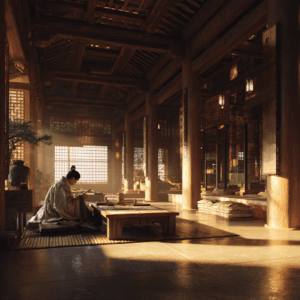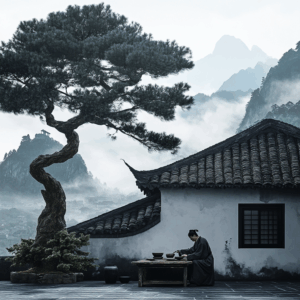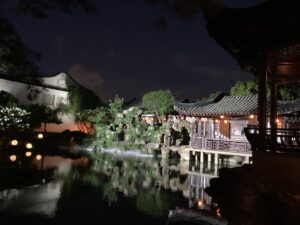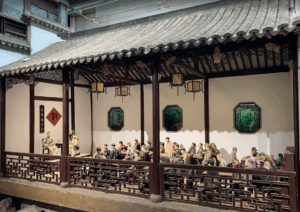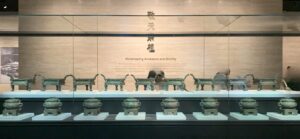一縷乳香,從浩渺黃沙深處緩緩升起,
跨越千年風沙,織成絲路上最悠遠的氣息。
本篇探尋的是「張騫與乳香」的故事,開篇便回望那場穿越萬里戈壁的壯闊行旅。
張騫奉命二度出使西域。
他踏著駝鈴與風聲,越過葱嶺、穿越沙漠,沿著月牙般的絲綢之路,為漢朝開啟了一條通向西方文明的香料大道。
乳香,正是這條道路上最珍貴的禮物之一。
來自阿拉伯半島與波斯灣地區的乳香,經過漫長的駝隊轉運,穿越高原與沙漠,終於經過絲路,抵達了中原。
這抹異域香料,使漢地初聞遠方奇香。
那縷乳香的氣味,微涼而甘甜,既能安神養心,又能作為祭祀與醫療之用,成為千古東西文化交融的象徵。
如今的蘭新高鐵,從西安一路通往蘭州,再延伸至新疆。
列車飛馳於戈壁之上,僅需數小時,便可穿越當年張騫跋涉數載的漫漫征途。
而當年,那一場行走,足足走了十萬里。
沙丘無盡,黃河迴旋;星月為伴,駱駝為舟。
張騫帶著一股堅定,一生只做一事的信念,穿越未知與危險,只為打開一扇通往文明的門。
而今,當蘭新高鐵的車窗映出無垠戈壁,請輕輕閉上眼,深吸一口氣。
也許你能在風中嗅到那絲微微的香甜,那是兩千年前,一個使者用生命換來的馥郁。
香未散,人未遠。
張騫未竟的路,如今已鋪成萬里鋼鐵大道,將東方與西方,歷史與未來,香氣與夢想緊緊相連。
乳香,是絲路的氣味;
而絲路,是人心不滅的遠方。
唐朝天寶年間形容乳香的詩句
《焚香頂禮玉毫光》
焚香頂禮玉毫光,敬拜靈砂供養床。
但有纖毫即是病,大雄真跡豈容藏。
譯文:
燃燒乳香,頂禮佛祖頭頂的玉毫光輝,虔誠供奉在以靈砂鋪設的法床上。
但若心中還有絲毫執著,那便是修行上的病;真正的大雄佛陀的真跡,怎會被世俗形式所遮藏?
《乳香隱隱透簾櫳》
乳香隱隱透簾櫳,風動經幡意韻濃。
佛殿莊嚴心自靜,禪音嫋嫋繞梁空。
譯文:
乳香的香氣幽幽縈繞窗櫺,風拂經幡,禪意愈發深長。
莊嚴佛殿中,心境自然沉靜,梵唄餘音嫋嫋,迴盪在樑間虛空。
資料來源: 唐朝天寶年間形容乳香的詩句
乳香 · 張騫
1.
還記得什麼是初志嗎?
是踏遍絕域,只為一縷故土香。
2.
越是平凡的商路,越能承載奇跡。
偉大的旅途,從來不需光芒鋪墊。
3.
路有盡時,志無止境。
一縷乳香,勝過萬里邊關的寂寞。
4.
乳香不以強取得之,
唯有穿越千重險阻,方能得其真魂。
5.
一棵乳香樹,要經歷創傷、曝曬、風蝕,
才能將最清澈的香氣,緩緩釋出。
6.
張騫的腳步,不只丈量著地圖,
也丈量著人心與世界的遙遠。
7.
一縷乳香,縱然微弱,
卻在絲綢之路上,點燃了萬邦來朝的火炬。
8.
痛苦是乳香的父親,
而時間,是乳香真正的雕刻師。
9.
真正的香氣,不是為了取悅嗅覺,
而是為了證明:靈魂曾在磨難中燃燒過。
10.
今日蘭新高鐵疾馳,千里一瞬,
但張騫留下的,是步步血汗中凝結的千年芬芳。
歌曲《絲路馥郁》|乳香 · 張騫 · 蘭新高鐵
蘭新高鐵
Sie sehen gerade einen Platzhalterinhalt von YouTube. Um auf den eigentlichen Inhalt zuzugreifen, klicken Sie auf die Schaltfläche unten. Bitte beachten Sie, dass dabei Daten an Drittanbieter weitergegeben werden.
Mehr Informationen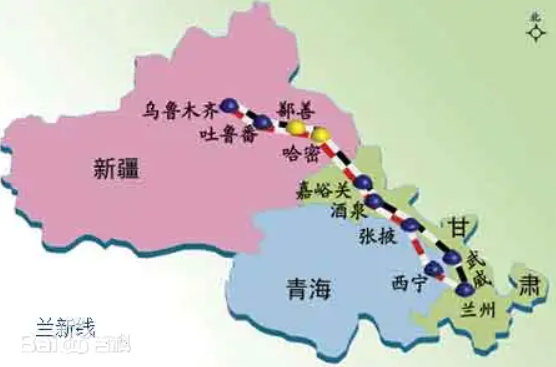
穿越大漠與雪山,一段橫貫西域的高速之旅——蘭新高鐵
想體驗一次真正壯闊的西部之行?蘭新高速鐵路(簡稱蘭新高鐵)將帶您從甘肅蘭州出發,直達新疆烏魯木齊,全長1786公里,是世界上一次性建成里程最長的高速鐵路之一。
這條高鐵途經甘肅、青海、新疆三省區,沿線設有22個車站,穿越黃土高原、祁連雪山、戈壁大漠與天山南北。沿途欣賞壯麗的河西走廊、神秘的吐魯番盆地、以及烏魯木齊的廣闊天際。
蘭新高鐵設計時速高達350公里,目前營運時速為200至250公里,僅需短短數小時,便能跨越千里荒原,感受西部的蒼茫與壯麗。從蘭州出發,途經西寧、張掖、嘉峪關、哈密、吐魯番,最終抵達烏魯木齊,形成一條連接中原與西域的現代絲路。
蘭新高鐵不僅大幅縮短了東西之間的交通時間,也成為中國與中亞、歐洲互聯互通的重要橋樑。它見證著古絲綢之路的新生,為「一帶一路」的宏圖添上了堅實的一筆。
無論是想探索西部風情,還是追尋歷史的回響,蘭新高鐵,都是開啟西行壯遊的最佳起點。
資料來源:兰新高速铁路
動車組
CRH5G

圖片來源:和谐号CRH5型电力动车组
資料來源:和谐号CRH5G型动车组
CRH5G型動車組簡介
CRH5G型動車組,由中車長春軌道客車股份有限公司研製,基於CRH5A型動車組,並汲取CRH380B系列設計經驗,專為應對高寒、風沙及高海拔環境而打造,為中國高速鐵路運營提供了重要技術支撐。
核心技術特點: 耐高寒與抗風沙設計
CRH5G型動車組強化了對極端環境的適應性:
空調系統增設防風沙與高效空氣過濾裝置,確保室內空氣品質。
車體結構優化,減少外部縫隙暴露,提升整車密封性。
動力與系統設計能承受攝氏-40℃至+40℃的極端溫差,於哈大高鐵、蘭新高鐵等嚴苛環境下運行表現優異。
CRH5G型動車組,不僅繼承了CRH5系列的舒適性與穩定性,更針對中國西部與北方的高寒、強風、沙塵等嚴苛條件進行了全面升級,成為中國高速鐵路耐候型列車的重要標誌之一。
📜 本作品已提交版权保护程序,原创声明与权利主张已公开。完整说明见:
👉 原创声明 & 节奏文明版权说明 | Originality & Rhythm Civilization Copyright Statement – NING HUANG
节奏文明存证记录
本篇博客文为原创作品,由黄甯与 AI 协作生成,于博客网页首发后上传至 ArDrive 区块链分布式存储平台进行版权存证:
- 博客首发时间:请见本篇网页最上方时间标注
- 存证链接:aabaad0e-eaf8-4077-83b6-b0381c0711c1
- 存证平台:ArDrive(arweave.net)(已于 2025年7月5日 上传)
- 原创声明编号:
Rhythm_Archive_05Juli2025/Rhythm_Civilization_View_Master_Archive
© 黄甯 Ning Huang, 2025. All Rights Reserved.
本作品受版权法保护,未经作者书面许可,禁止复制、改编、转载或商用,侵权必究。
📍若未来作品用于出版、课程、NFT或国际展览等用途,本声明与区块链记录将作为原创凭证,拥有法律效力。

《节奏文明观|声音篇 —— 声音如何显形文明:世界在频率里被记住》
声音,不只是被听见,而是文明显形的方式。
从楚简的五音、乐风,到楚辞的呼唤与叩问;
从高铁美学的香气、色彩、戏曲、工艺与乐器,
到速度时代被重新激活的气息结构——
声音将这些异质的材料对齐,
让古今在同一频率上共振。
本篇追问:
一个文明,是如何通过声音保持呼吸、记忆与秩序的?
Sound is not merely heard—it is how a civilization becomes visible.
From the Five Tones and musical governance in Chu bamboo texts,
to the chants and inquiries of the Chu Ci;
from the sensory systems of High-Speed Rail Aesthetics—
aroma, color, opera, craftsmanship, instruments—
to the breath-structures reactivated in the age of speed,
sound aligns these disparate materials into a single field of resonance.
This essay asks:
How does a civilization sustain its breath, memory, and order through sound?

《节奏文明观|语法篇 ——节奏如何生成语法:意义是从停顿里长出来的》
本篇〈语法篇〉从节奏文明的视角,重新理解语法与意义的生成方式。语法并非源自规则,而是节奏在停顿中形成的秩序;意义并非来自解释,而是从停顿里生长出来。文章经由三条路径展开:感官的停顿(香气、色彩、声音、器物)、思想的停顿(楚简的断裂语法)、空间的停顿(地景与折返),呈现当停顿被排列,语法便显形;当语法被看见,文明重新获得呼吸。
This essay rethinks grammar through the lens of Rhythm Civilization. Grammar does not arise from rules but from rhythm settling into pause; meaning does not come from explanation but grows from suspension. Through sensory pauses, conceptual pauses in Chu bamboo-slip syntax, and spatial pauses in landscape, the text shows how arranged pauses generate grammar and how visible grammar allows civilization to breathe again.

《节奏文明观|系统篇 ——系统如何形成:从一条线,到一整个世界》
《系统篇》探问一个被现代世界忽略的核心:文明中的“系统”,并不是被规划、设计、建构出来的,而是从节奏中自然生长的。一条手势的线、一段呼吸的速度、一条铁轨的方向、一种工艺的重复动作,当这些节奏累积到足够密度,系统便从“线”的稳定,走向“面的对拍”,再走向“体”的自我维持。本篇解析系统如何形成三阶段的生成路径:起点是一条稳定呼吸的线;生成是线与线开始对拍、连成面;成熟是结构自我复制并成为文明的呼吸体系。系统不是框架,而是节奏的结晶;不是工程图,而是一个世界自动组织自己的方式。在这个时代,重新理解系统如何被听见、被调频、被唤醒,是人类重新学习文明的关键一步。The System Chapter explores a forgotten truth of civilization: systems are not designed—they emerge from rhythm. A single stroke of the hand, the pace of a breath, the direction of a railway line, the repetitive motion of a craft—when these rhythms accumulate with enough density, a system naturally evolves from the stability of a line, to the synchronized convergence of patterns, and finally into a self-sustaining organism. This chapter unfolds the three-phase pathway of system formation: origin as a line that breathes steadily; formation as lines begin to resonate and form a field; maturation as structure replicates itself and becomes a living rhythm of civilization. A system is not a framework but the crystallization of rhythm, not a diagram but a world that organizes itself through resonance. In an age overloaded with structures yet starved for coherence, relearning how systems are heard, aligned, and awakened becomes essential for recovering a deeper sense of civilization.
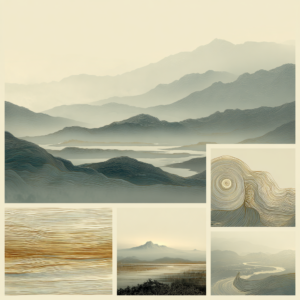
《节奏文明观|地景篇 —— 地景的学习法:用空间的节奏理解文明》
本篇探讨“地景如何成为一种学习方式”。空间具有节奏——在距离、密度与停顿中,影响我们感知记忆、行动与文明。透过阅读山河、城市与路径的节奏,我们重新理解文明如何透过身体被感受与学习。
This essay explores how landscapes become a form of learning. Space carries rhythm — in distances, densities, and pauses — shaping how we perceive memory, movement, and civilization. By listening to the tempo of mountains, cities, and pathways, we rediscover how culture is formed through the body’s response to space.
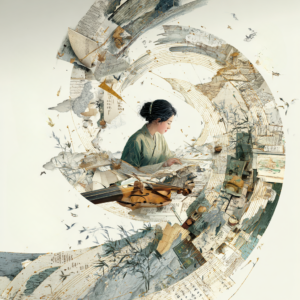
《节奏文明观|体质篇 —— 模组型体质的学习法:以节奏为师,以身体学习文明》
这篇〈模组型体质的学习法〉是我第一次认真回望,我这一生到底是怎样学习的。事实上,我的学习并不是只有直觉,也不是不用头脑,而是:身体先感到,头脑才开始理解;直觉先开门,思考随后把结构建起来。每当我进入一个陌生领域,我不是从概念开始,而是从感受与节奏开始——一旦身体抓到节奏,头脑便能迅速组织、推理、整合。无论是乐器、戏曲、香气、工艺、文学,或是楚文明的六十篇写作,我的路径始终一样:感知点亮入口,思考完成结构,文明在两者之间自动显形。我终于明白:我学习的不只是知识,而是世界如何运作。
This essay is my first honest attempt to understand how I have learned throughout my life. My learning has never been purely intuitive, nor purely intellectual. The order is simply different: the body senses first, and the mind understands afterward. Intuition opens the door; thinking builds the structure. Whenever I enter a new field, I do not begin with concepts but with sensation and rhythm—once my body catches the rhythm, my mind can quickly organize, reason, and integrate. Whether in instruments, opera, scent, craft, literature, or the sixty essays on Chu civilization, the pattern remains constant: sensation lights the entry, intellect completes the architecture, and the structure of a civilization emerges between the two. Only now do I realize that I was never learning “knowledge” alone—I was learning how the world works.

《我的人生,是一部楚居——一个非线性学习者的迁徙与文明回归》
这是一篇以《楚居》的逻辑重新阅读人生的个人叙事:七所大学、七个科系、七座城市、七种工艺、七种乐器的迁徙与学习经验。那些曾被视为“分散”的路径——学业、城市、工艺、音乐——在楚人的徙居节奏中重新排版,显现为一个非线性学习者独特的生命结构。由此展开一条“迁徙与文明回归”的路径:漂泊不再是迷失,而是一种自我命名的方式,让生命的多声部共同指向同一个根。
This essay rereads a life through the logic of Chu-Ju: seven universities, seven disciplines, seven cities, seven crafts, and seven musical instruments—each a trace of migration and learning. What once appeared as scattered paths—academia, geography, craft, and music—rearranges itself through the Chu rhythm of continual relocation, revealing the underlying structure of a nonlinear learner’s life. From this emerges a journey of migration and civilizational return: wandering becomes not a sign of being lost, but a form of self-naming, allowing the many voices of a life to point toward the same root.



